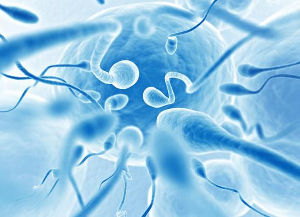 Postcoital test (Shuvarsky's test) is a laboratory study that determines the concentration and degree of motility of sperm in the cervical secretion after copulation. According to the test results, it is possible to assess the degree of interaction between semen and mucus, which is contained in the cervical canal.
Postcoital test (Shuvarsky's test) is a laboratory study that determines the concentration and degree of motility of sperm in the cervical secretion after copulation. According to the test results, it is possible to assess the degree of interaction between semen and mucus, which is contained in the cervical canal.
Method essence
Shuvarsky's test is carried out after sexual intercourse in order to determine the number of mobile male germ cells in the secretion of the cervical canal. The test results reflect the ability of the sperm to cover the distance from the uterine cavity to the fallopian tube, which contains the egg.
When to do a postcoital test?
It is possible to obtain the most reliable results of the Shuvarsky test only if the day of the menstrual cycle is chosen correctly. The most favorable time for passing the test is the period during which sperm have a great chance of penetrating the fallopian tube through the uterine canal.
What is cervical mucus?
Inside the canal, located between the uterine cavity and the vagina, there is a cervical secretion. It is a natural barrier whose characteristics can change depending on the day of the menstrual cycle. In the 1st phase, the level of estrogen increases, and therefore the production of cervical secretions increases.
 The most optimal time for the penetration of sperm into the uterus is the periovulatory period - the interval between the 9th and 16th days of the menstrual cycle. You can accurately determine the appropriate time for analysis in the case of using an ovulation test. During the release of the oocyte from the gonads, the viscosity and the amount of cervical mucus in the urine increases.
The most optimal time for the penetration of sperm into the uterus is the periovulatory period - the interval between the 9th and 16th days of the menstrual cycle. You can accurately determine the appropriate time for analysis in the case of using an ovulation test. During the release of the oocyte from the gonads, the viscosity and the amount of cervical mucus in the urine increases.
When optimal conditions are created, sperm can easily travel from the vagina to the uterine cavity and fallopian tubes. Immediately after the oocyte leaves the follicle, the corpus luteum contained in it begins to produce progesterone. It inhibits the secretory function of the cervical glands, and therefore the viscosity of the mucus increases. It is for this reason that the process of penetration of sperm through the cervical canal is difficult.
Test technique
How to take the postcoital test? Laboratory examination is carried out 5-7 hours after sexual intercourse. According to the WHO recommendations, the Shuvarsky test should be carried out within 24 hours after copulation.
Features of preparation for the test
2-3 days before taking the tests, you should refrain from sexual intercourse, the use of vaginal suppositories and tablets. Within 30-50 minutes after coitus, it is undesirable to take a shower, wash or douche. Do not use tampons or take a bath before the examination.
 At the doctor's appointment, cervical secretions are taken. During a visual examination, the specialist pays special attention to the viscosity and the amount of mucus in the cervix (pupil symptom). If fluid drains from the cervix, the symptom reads positive, its absence may indicate insufficient production of estrogen by the sex glands.
At the doctor's appointment, cervical secretions are taken. During a visual examination, the specialist pays special attention to the viscosity and the amount of mucus in the cervix (pupil symptom). If fluid drains from the cervix, the symptom reads positive, its absence may indicate insufficient production of estrogen by the sex glands.
Procedure steps
- using a pipette, a small amount of mucus is removed from the cervical canal;
- samples of cervical secretions are examined by means of an electron microscope;
- a reproductive specialist assesses the number of dead and motile sperm on a slide.
Important! The purpose of the test is not only to determine the number of motile sperm, but also to assess their survival after intercourse.
The result of Shuvarsky's test is considered positive if from 5 to 25 viable sperm are found in the biomaterial. A small amount of live spermatozoa or their absence may indicate a violation of the process of ejaculation and the failure of sperm to enter the cervical canal.
Deciphering the results of the Shuvarsky test
The test result is determined not only by the presence or absence of sperm in the cervical mucus, but by their concentration. The more spermatozoa are found in the biomaterial, the higher the probability of their penetration into the fallopian tube and fertilization of the oocyte.
Postcoital test - interpretation of results:
|
Analysis results |
Viable sperm count |
Sperm motility |
Decoding the results |
|---|---|---|---|
|
positive |
over 25 |
high |
high chances of successful fertilization |
|
satisfactory |
from 10 to 25 |
straightforward |
fertilization is possible |
|
doubtful |
from 5 to 10 |
low |
low chances of fertilization |
|
unsatisfactory |
extremely unviable |
zero |
incompatibility of partners |
|
negative |
absent |
zero |
The problem of ejaculation in a man |
Very often, unsatisfactory test results indicate the wrong choice of the day for the analysis. Therefore, in order to obtain more reliable information, the Shuvarsky test is performed several times.
Factors Affecting Test Results
Many specialists in the field of reproductive medicine question the effectiveness of the postcoital test. This is due to the dependence of the analysis results on a large number of factors, which include:
- inflammation in the organs of the reproductive system;
- the presence of antisperm bodies;
- connective tissue adhesions in the uterus after abortion;
- the consequences of a wedge biopsy;
- initial spermogram data.
The instability of the results obtained is often the reason for the refusal to use the Shuvarsky test in the determination of immunological infertility.
Conclusion
 A postcoital test is performed to determine the concentration and degree of motility of sperm in the cervical mucus after intercourse. The test results give an idea of the presence of antisperm immunity, which prevents the penetration of sperm into the fallopian tube. Due to the dependence of the results of the Shuvarsky test on a large number of factors, the method is less and less used in the determination of immunological infertility.
A postcoital test is performed to determine the concentration and degree of motility of sperm in the cervical mucus after intercourse. The test results give an idea of the presence of antisperm immunity, which prevents the penetration of sperm into the fallopian tube. Due to the dependence of the results of the Shuvarsky test on a large number of factors, the method is less and less used in the determination of immunological infertility.
